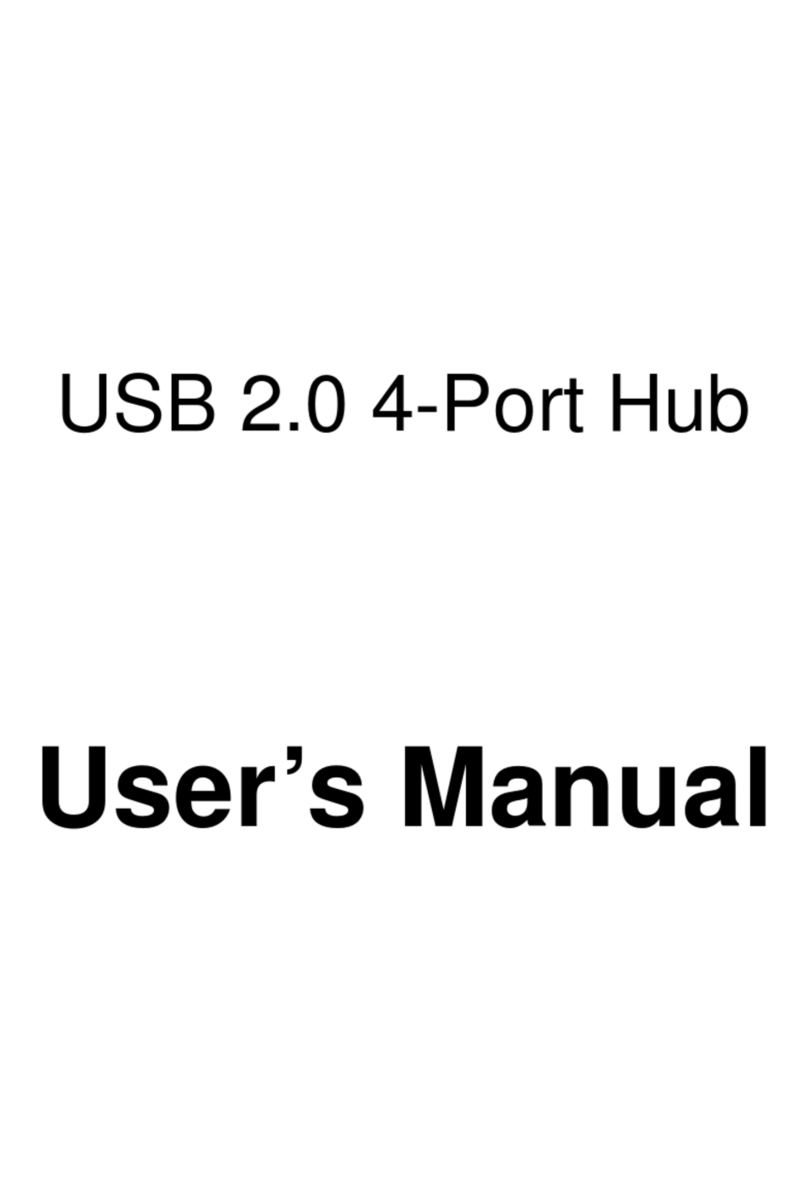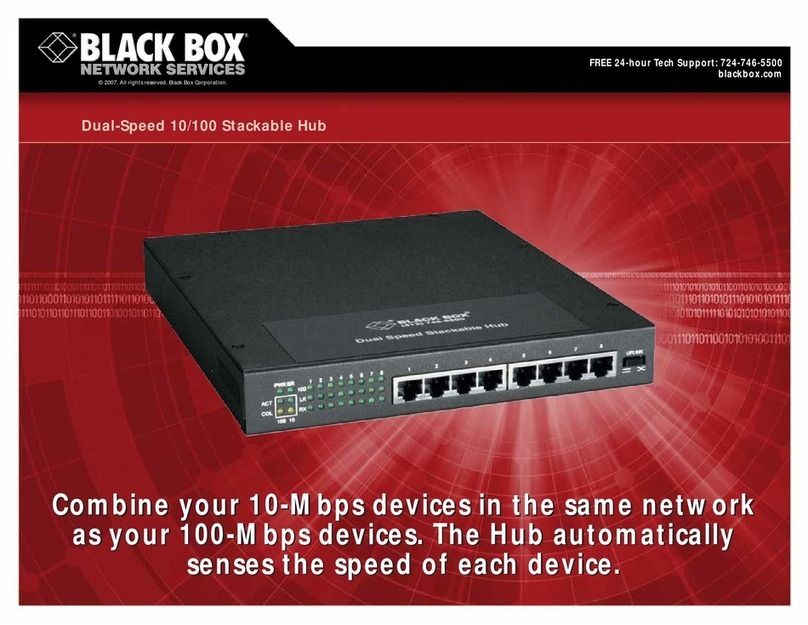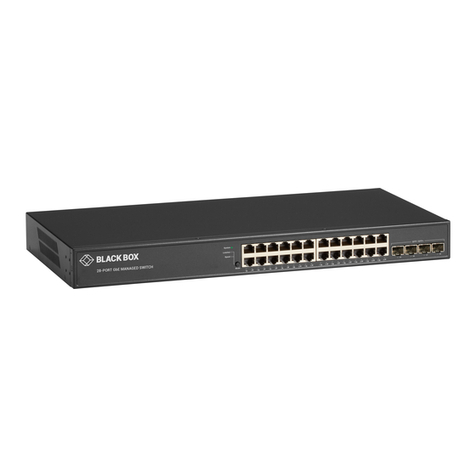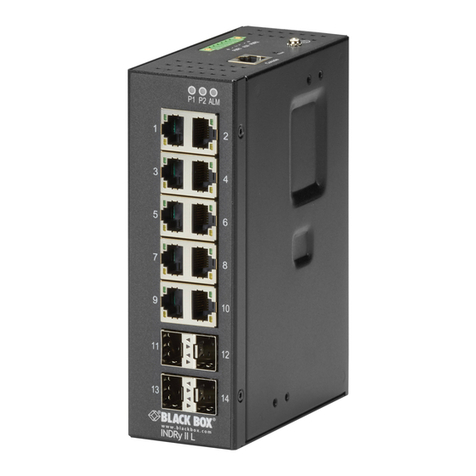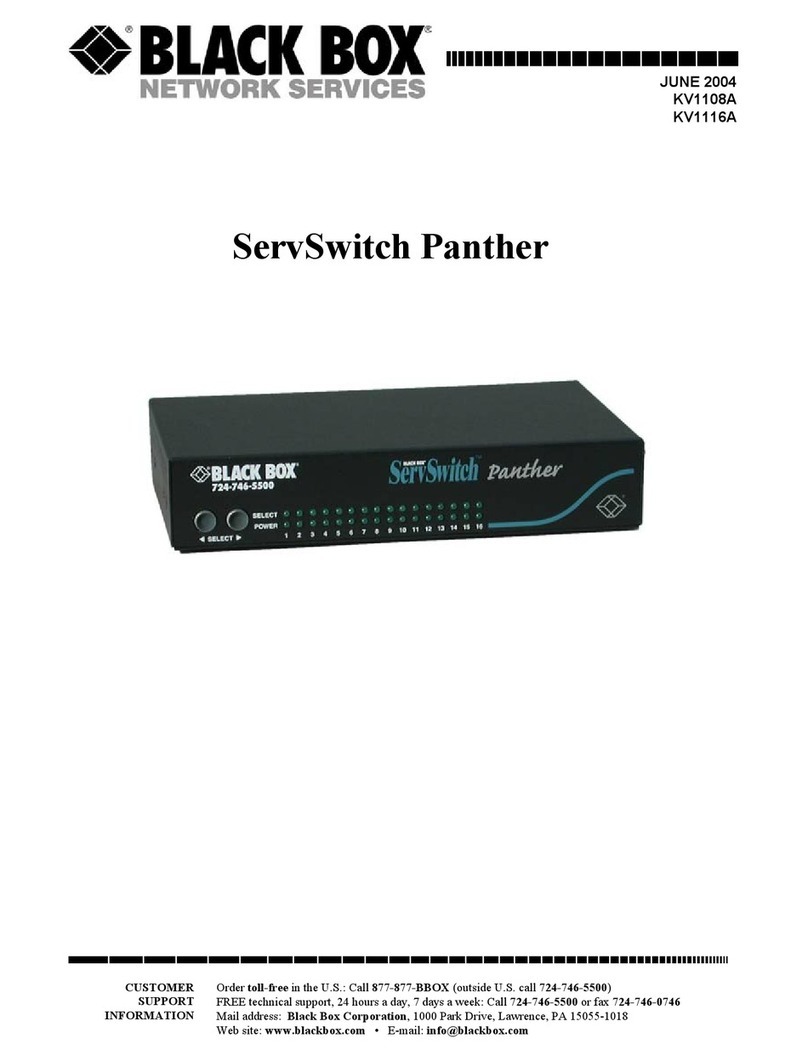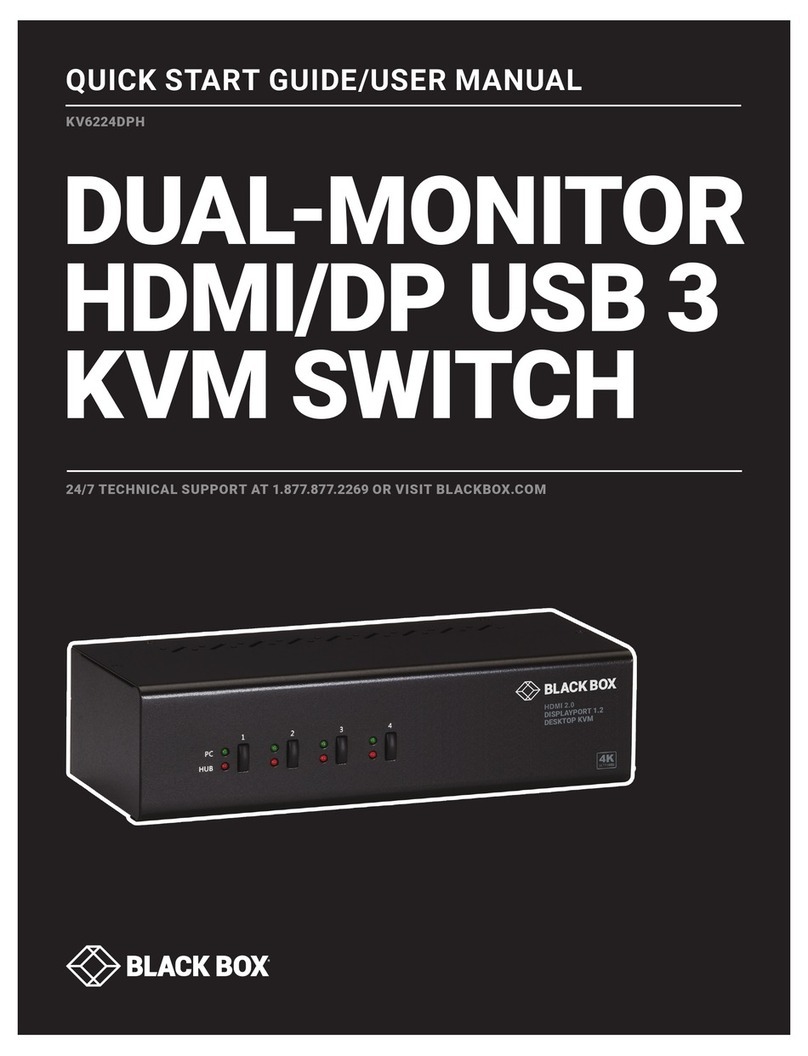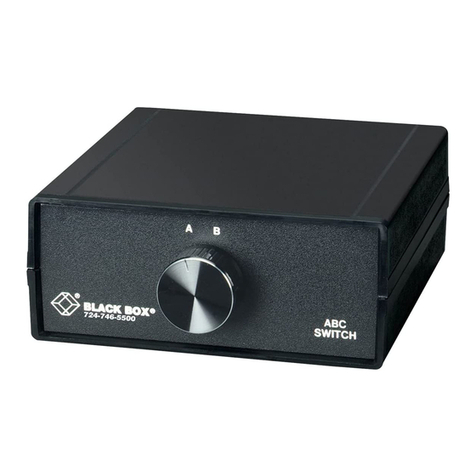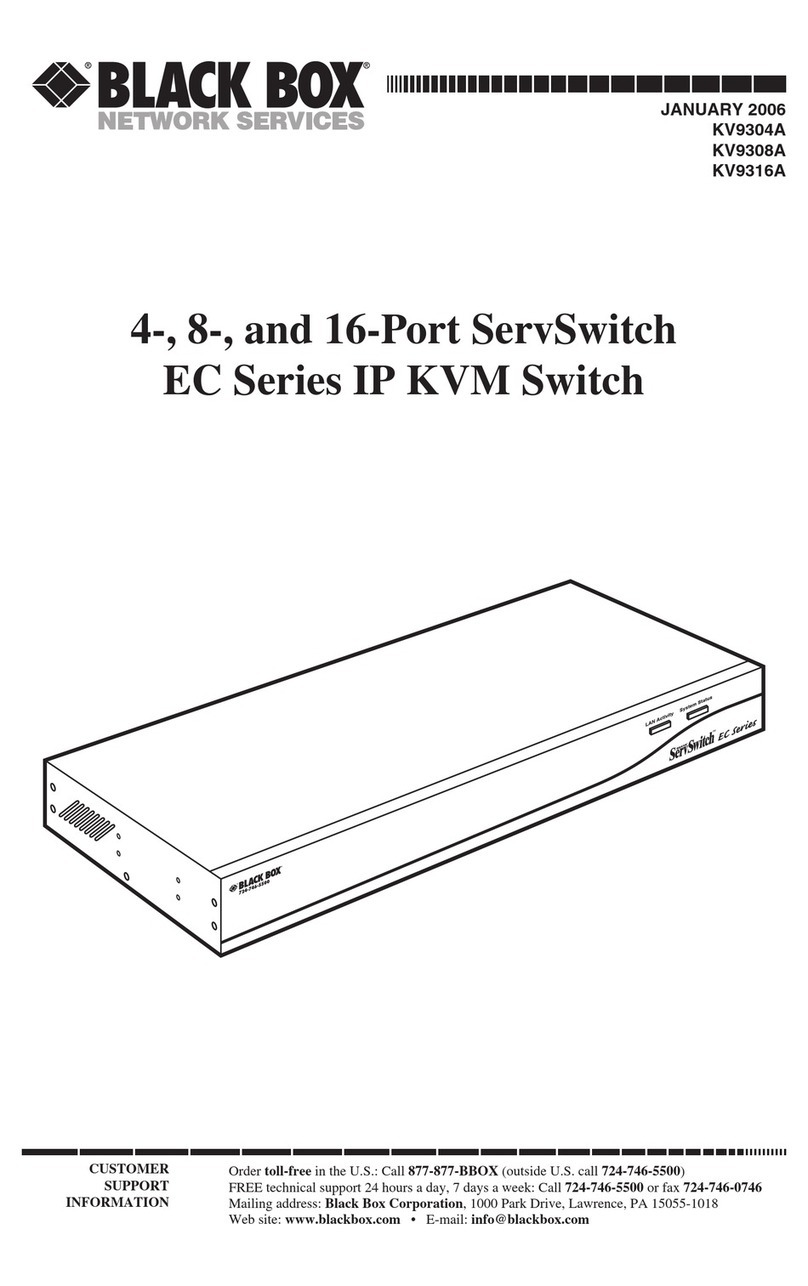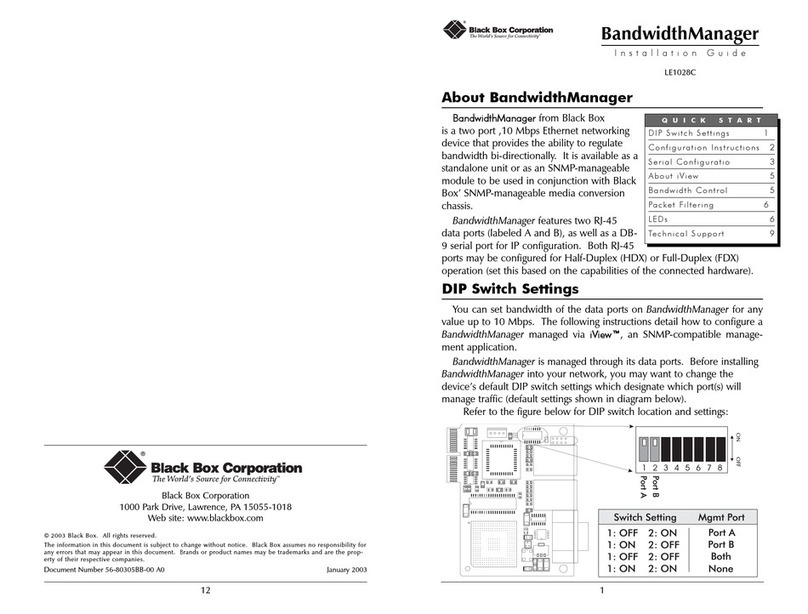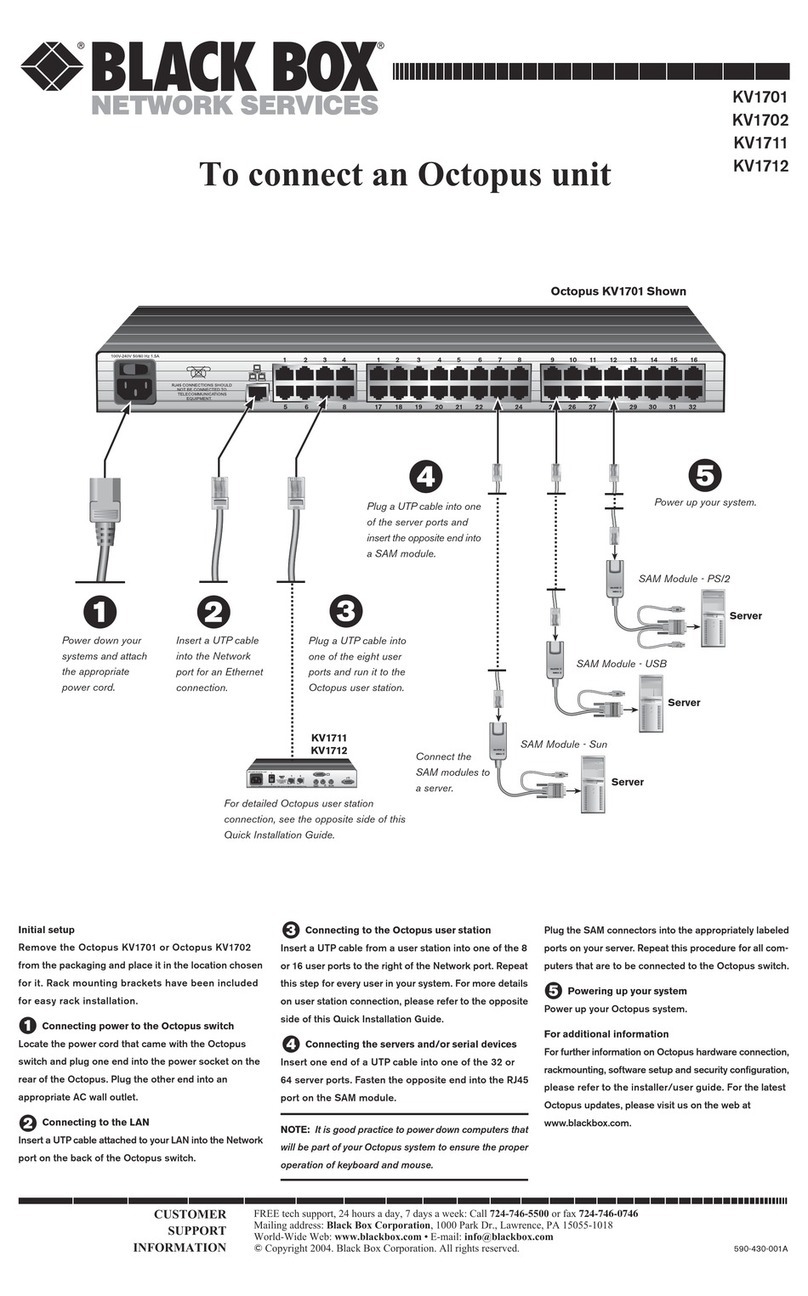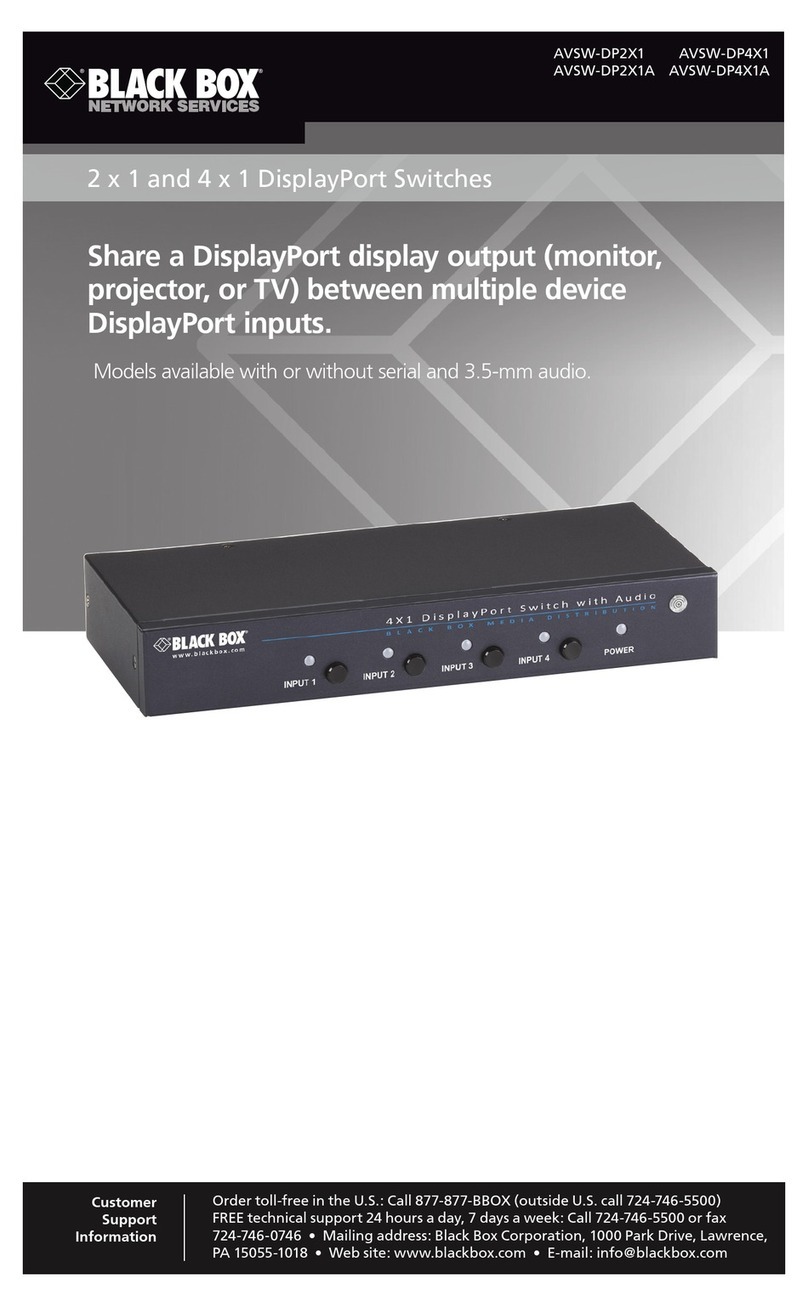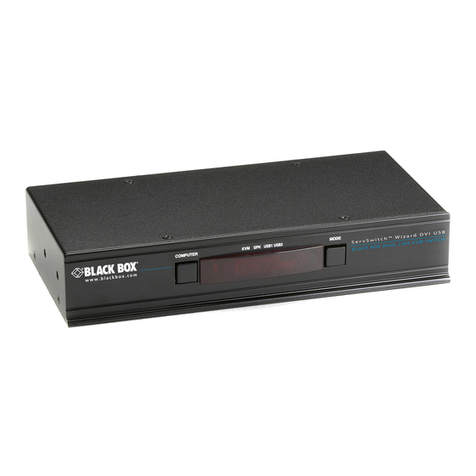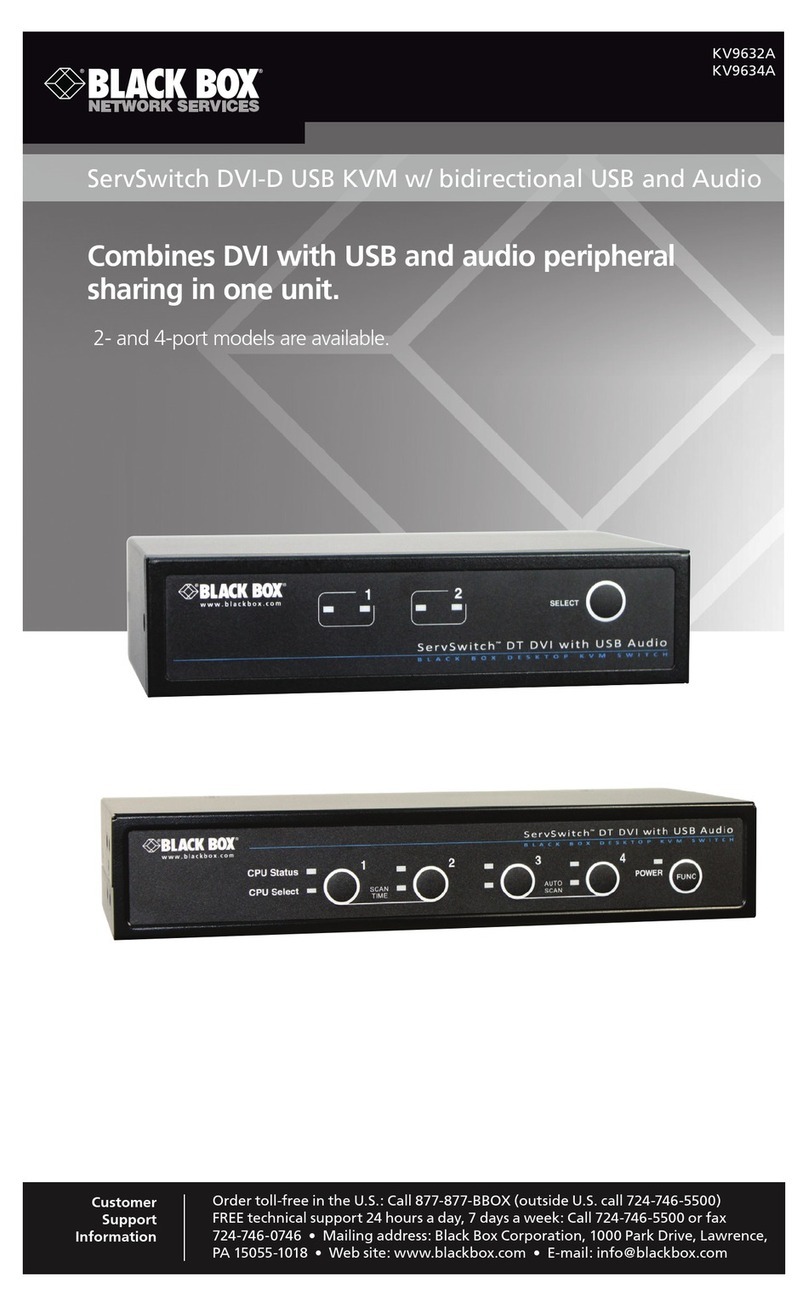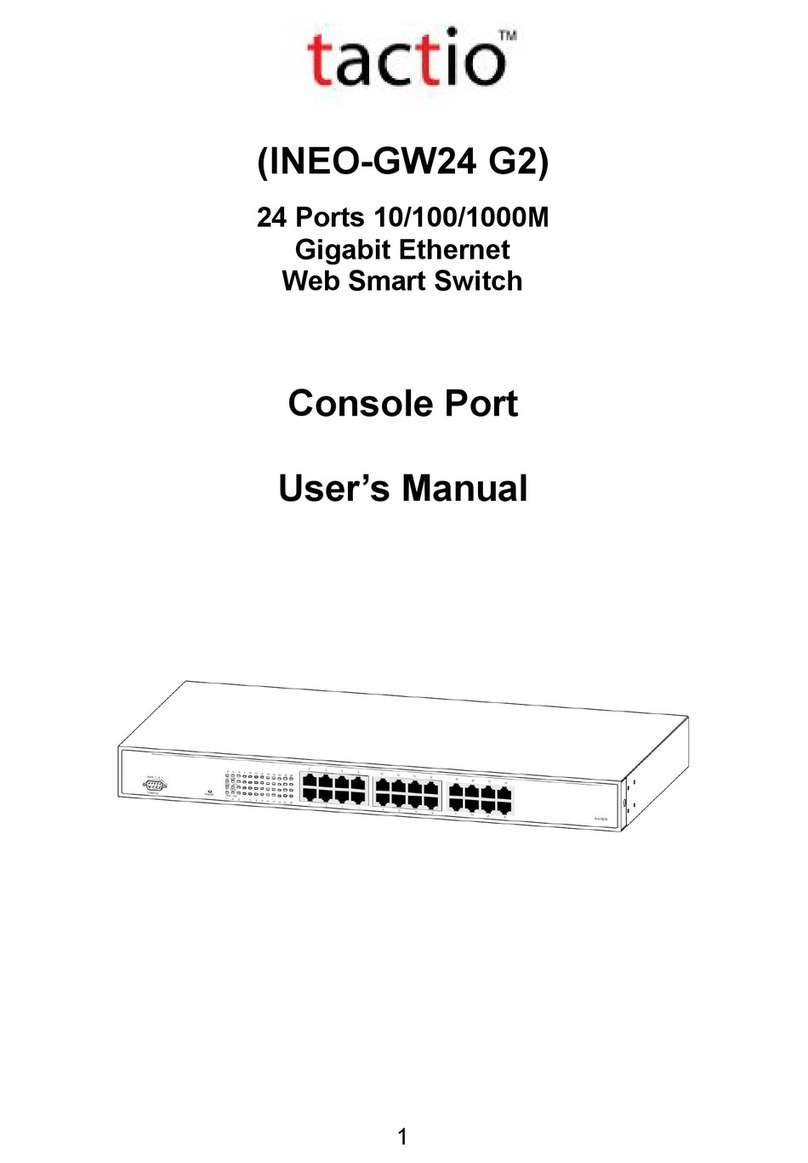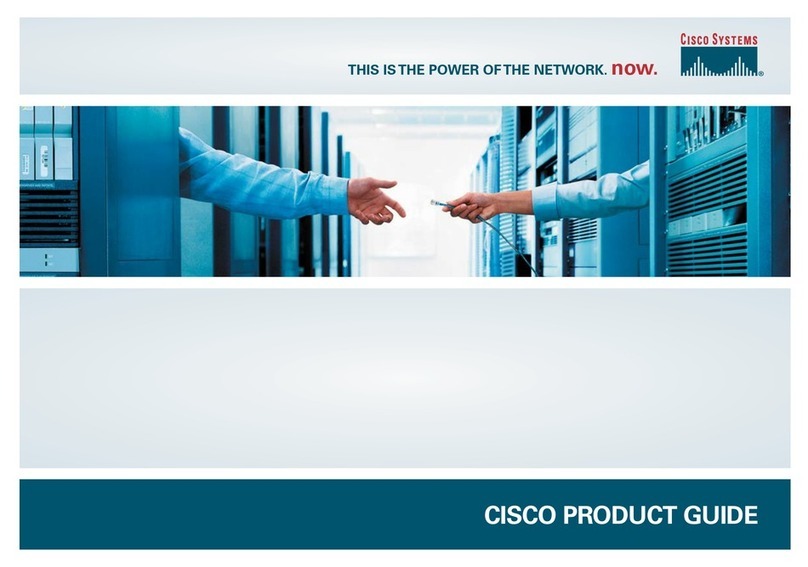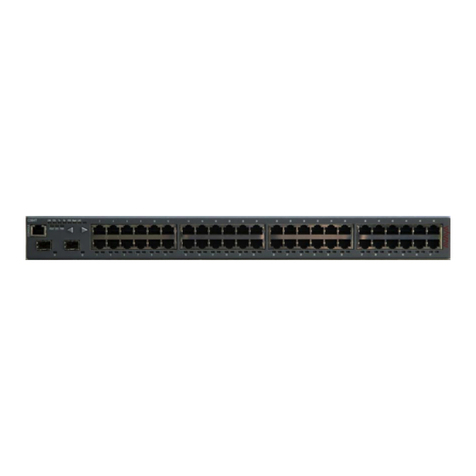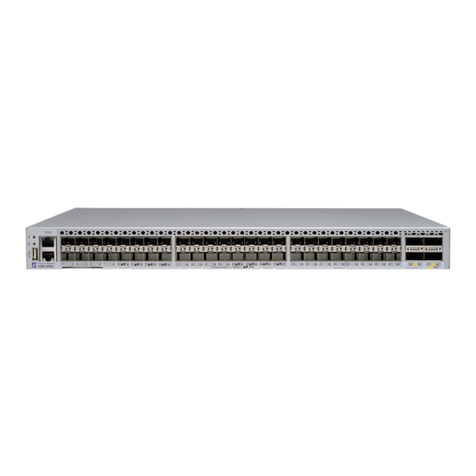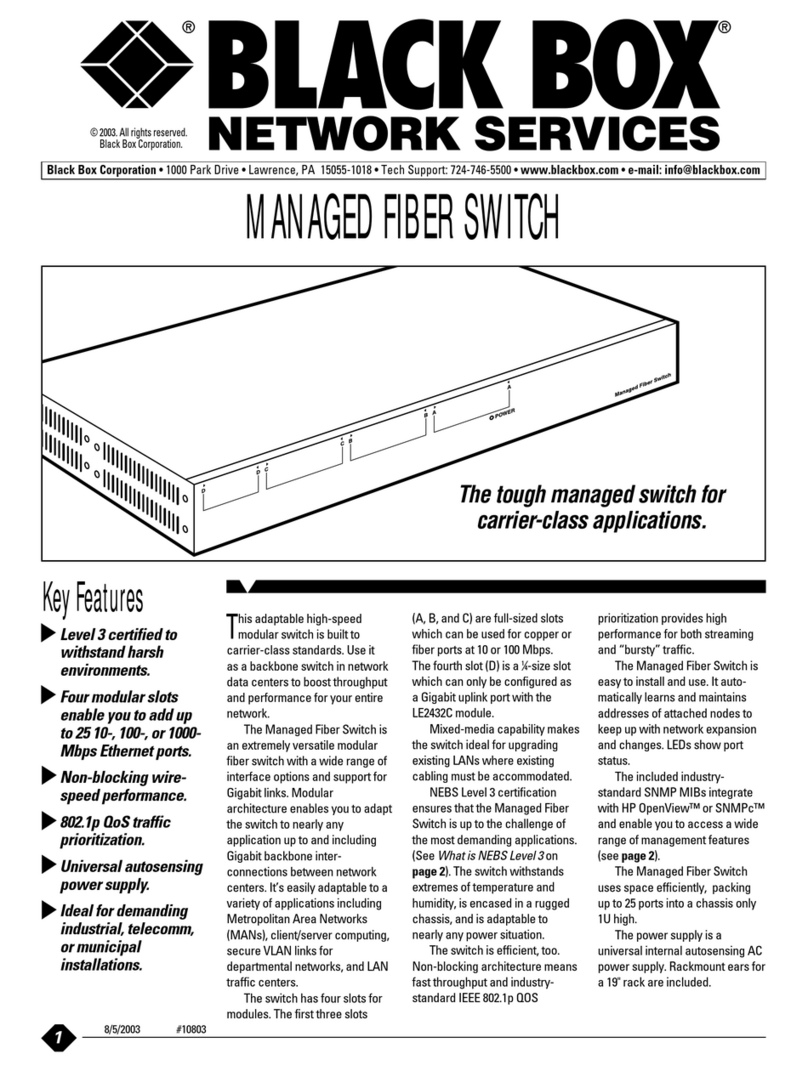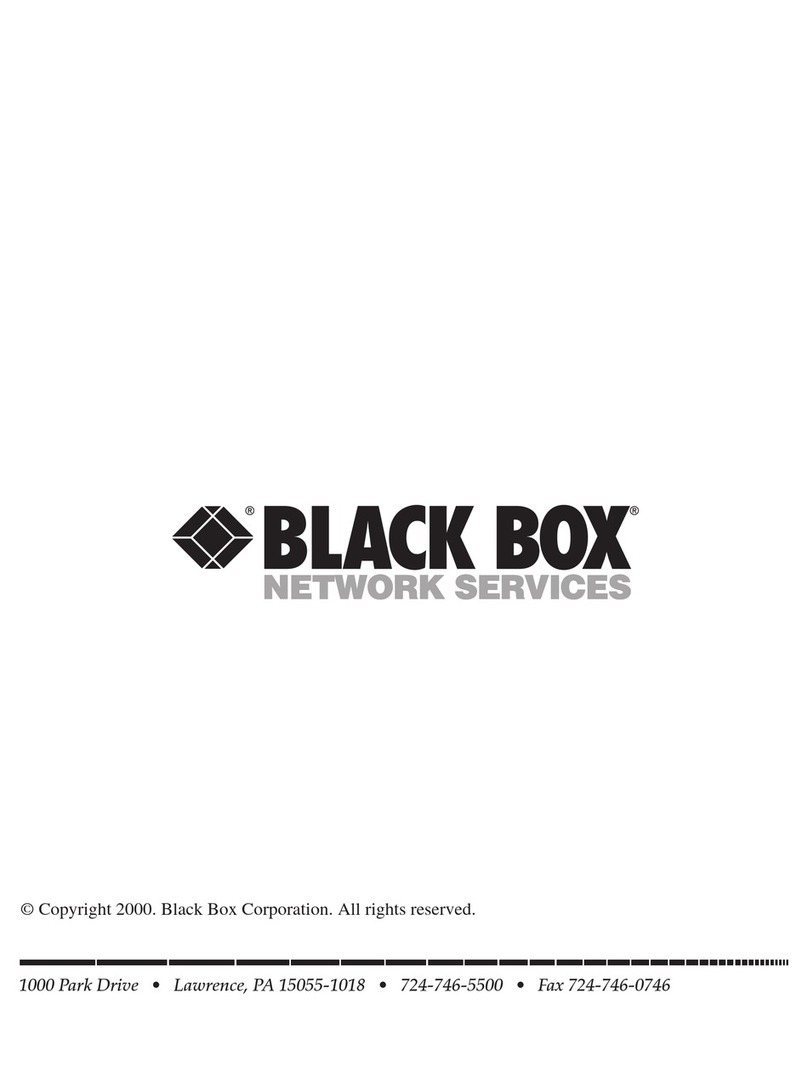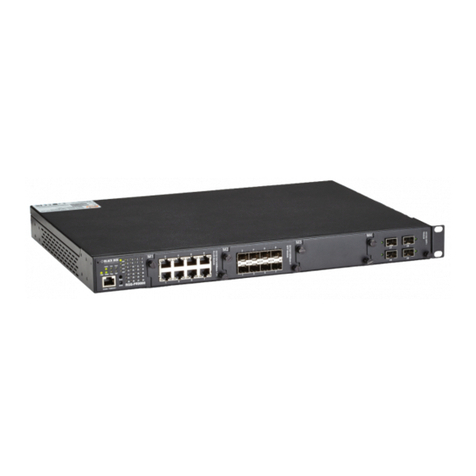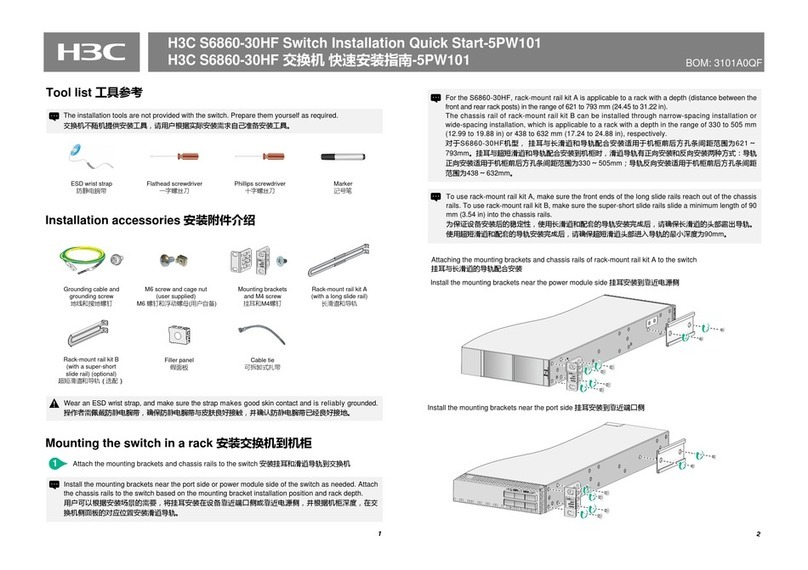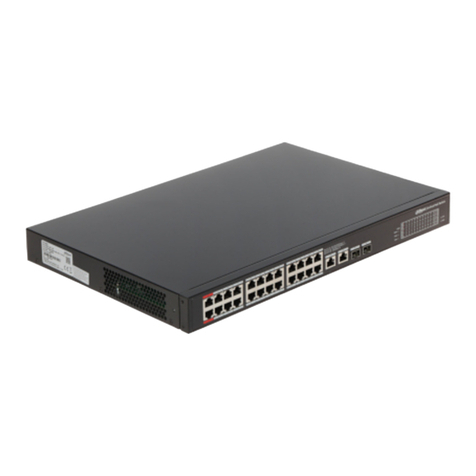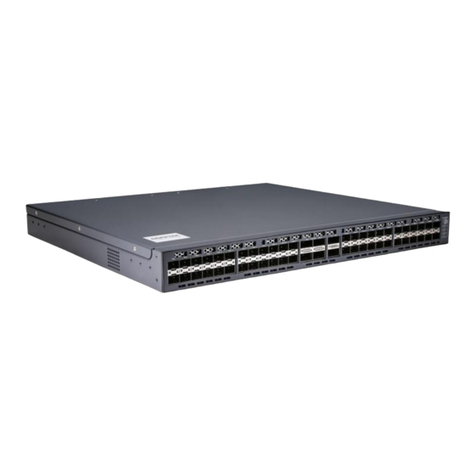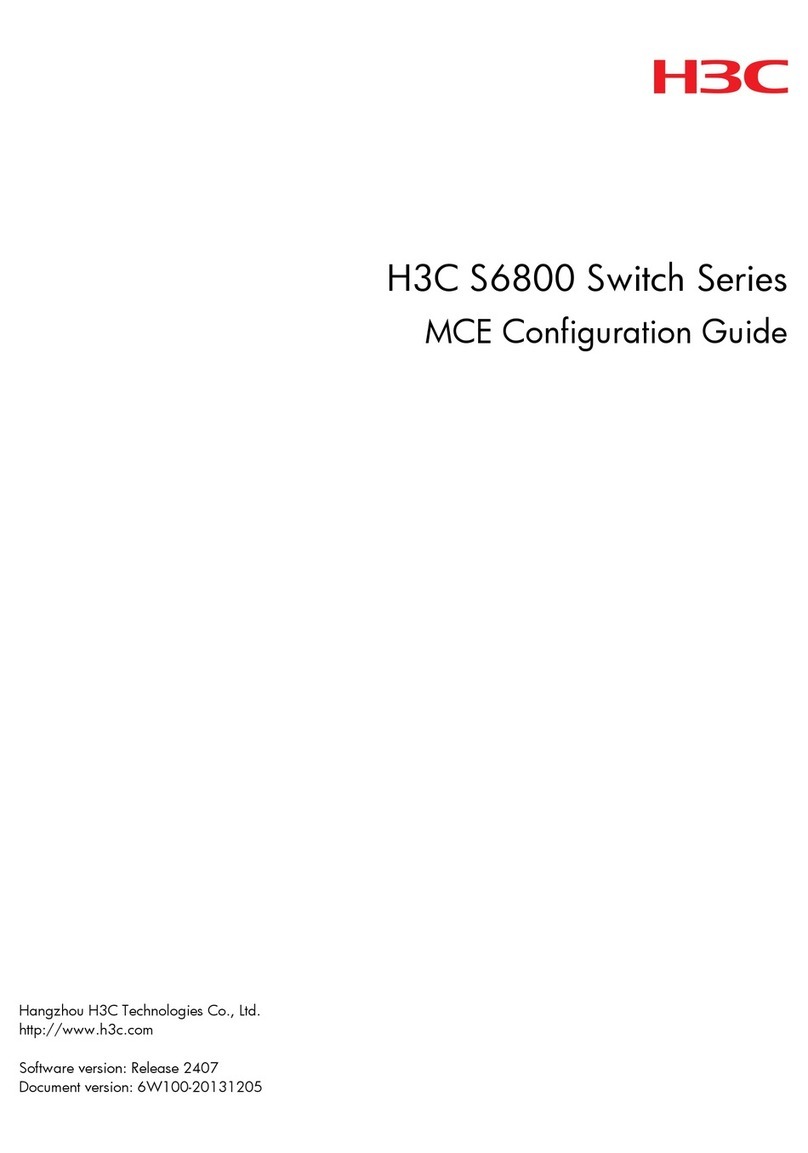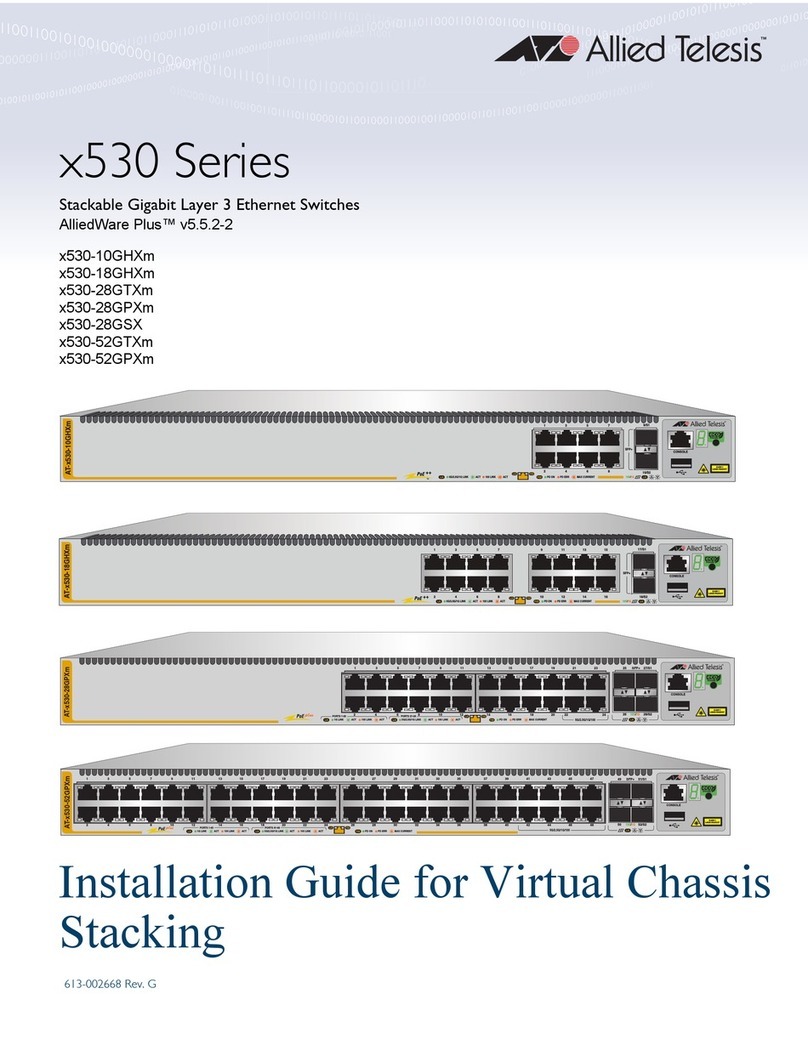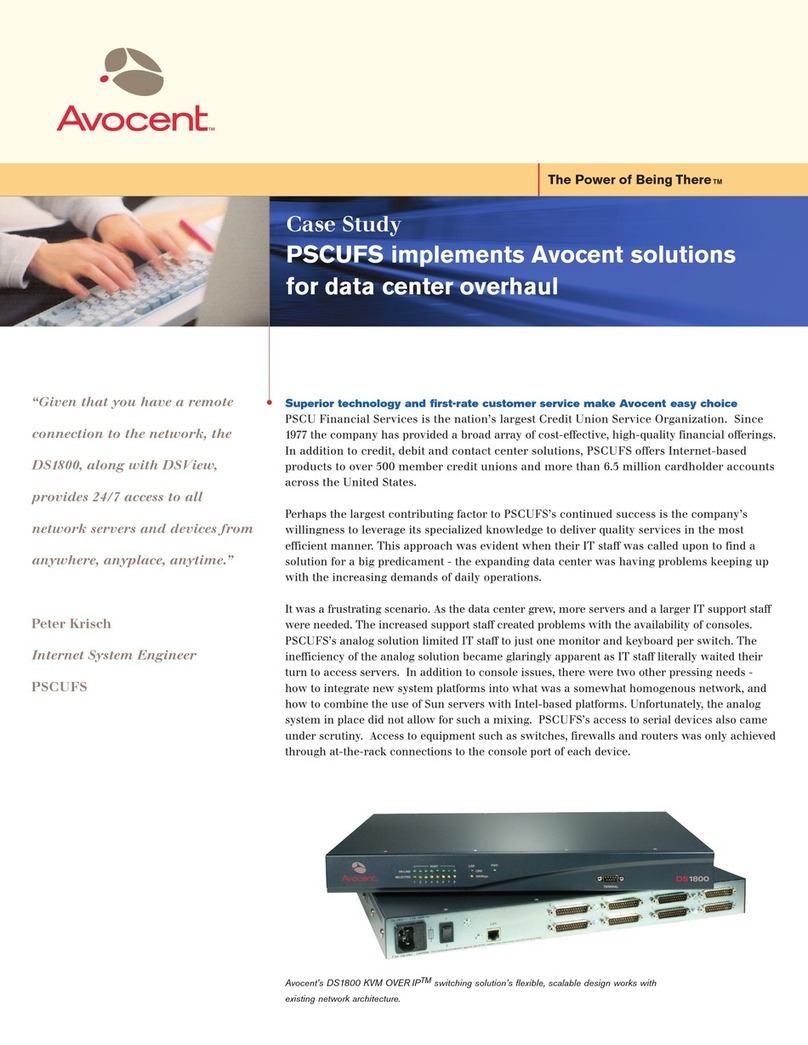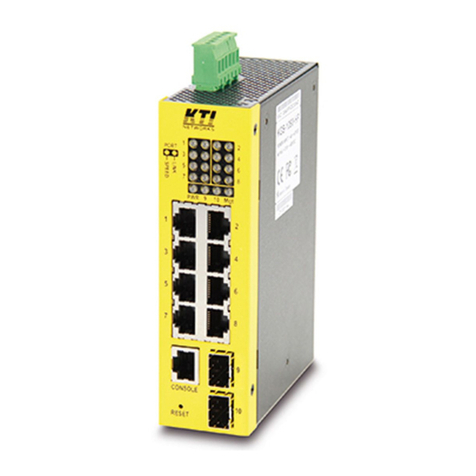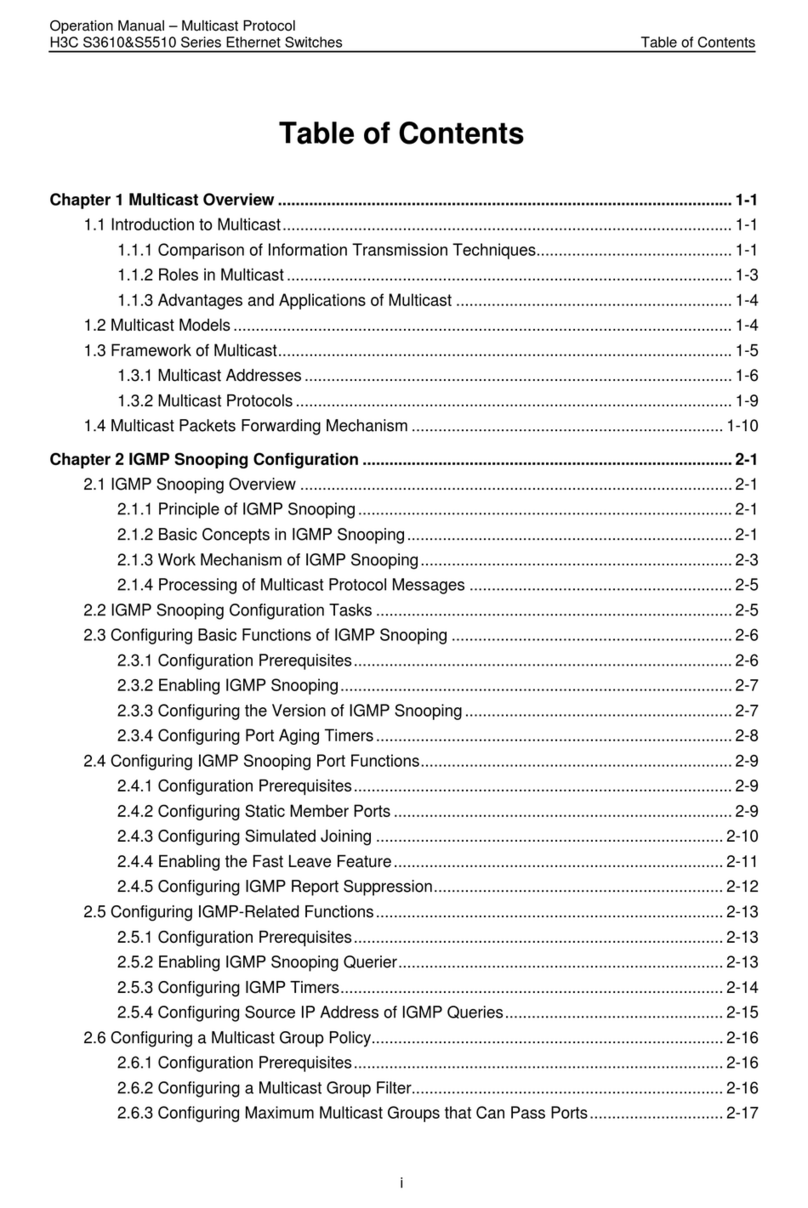FEATURES
L2 Managed Gigabit Ethernet Switches:
• Support all IEEE 802.3/u/x/z Ethernet,
Fast Ethernet, and Gigabit Ethernet
specifications. Great for mixed-speed
environments!
• Also use in workgroups, office LANs,
and larger metropolitan networks
that carry higher-priority traffic for
powerful applications.
• Bundle multiple ports to create a single
high-bandwidth port using 802.3ad Link
Aggregate Control Protocol (LACP)
aggregation.
• Programmable higher layer classification
and prioritization for reliable Quality of
Service (QoS).
• Ideal for use in VoIP real-time
applications where info moves from
Layer 2 to Layer 4.
• Robust security with VLAN capabilities,
as well as port security and IGMP
snooping.
• Easy to manage and configure. Support
SNMP and Web-based management.
• Spanning Tree (802.1w) algorithms
prevent network switching loops.
• RoHS compliant.
Web Smart Gigabit Switches:
• Features 8 or 48 autosensing 10-/100-/
1000-Mbps ports plus two slots for SFPs.
• Use any standard Web browser to
monitor and control the switches.
Migrate to copper and fiber Gigabit Ethernet with these managed switches.
OVERVIEW
L2 Managed Gigabit Etheret Switches with (2) Dual-Media
SFP Ports and Web Smart Gigabit Switches provide a path for
migrating your network to Gigabit Ethernet. Manage both
types of switches through a Web interface or via SNMP. You
can also manage the L2 managed switches via a command-
line interface (CLI).
L2 Managed Gigabit Ethernet Switches
with (2) Dual-Media SFP Ports
Give important traffic priority and bandwidth when
switching Gigabit copper—and fiber!
Include 8, 16, 24, or 48 10-/100-/1000-Mbps copper ports
and two Small Form-Factor Pluggable (SFP) slots for adding
the fiber SFP modules of your choice.
For flexible and manageable port switching and
bandwidth aggregation, order a BLACK BOX® L2 Managed
Gigabit Ethernet Switch with (2) Dual-Media SFP Ports.
Available with 8, 16, 24, or 48 10-/100-/1000-Mbps copper
ports, these Layer 2 manageable switches offer particular
advantages in mixed-speed and legacy-integration
environments. You can connect twisted-pair Ethernet, Fast
Ethernet, and Gigabit Ethernet segments to devices on other
ports or to a fiber optic backbone plugged into the switches’
dual SFP slots.
The 8-port version is an excellent choice for connecting
branch office machines to a larger MAN or WAN. What’s
more, because the 8-port version has a noise-free, fanless
design, it’s tailor-made for cramped SOHOs where you don’t
want a noisy network switch as a distraction. The larger
models are ideal for use in workgroups or WANs.
For the SFP slots, just order the fiber SFP modules that best
suit your application. We offer the 850-nm Multimode Gigabit
SFP Module (LGB200C-MLC) and 1310-nm Single-mode
Gigabit SFP Module (LGB200C-SLC10). (NOTE: For information
on SFP module compatibility, including other modules from
Black Box, contact our FREE Tech Support.)
You can also provide more bandwidth to a specific
application or segment with the switches. That’s because they
feature 802.3ad Link Aggregate Control Protocol (LACP)
bandwidth aggregation, which enables you to combine
Gigabit ports to create a multilink trunk for load sharing. It’s
especially beneficial in switch-to-switch cascading applications
where you require higher full-duplex speeds.
The size of the multilink load-sharing trunk depends on
the switch you order. The 8-port model supports up to four
Gigabit ports per a trunk for a bandwidth up to 8 Gbps. The
16-port model can be set up with up to eight Gigabit ports
per a trunk for a bandwidth of up to 16 Gbps. For more LACP
bandwidth, order the 24- or 48-port models, which each
support up to 12 Gigabit ports per trunk.
LACP not only increases link capacity, it also creates higher
availability. And because the switches aggregate all traffic
based on MAC addresses, they balance traffic loads efficiently.
Along with Layer 2 802.1p Priority Queue control, the
switches offer a much higher level of Quality of Service (QoS)
support, so you can program a higher layer classification and
ensure that traffic in real-time applications, such as Voice over
IP (VoIP), receives higher priority.
Broadcast/multicast storm suppression enables you to
restrict excess traffic on your network. You can also control
the rate limit for each switch port and set threshold values for
the size of discarded packets. Jumbo frame support helps to
ensure reliable data transmission, too. With this, you can set
the switches to forward packets up to 9K in size before
discarding them.




